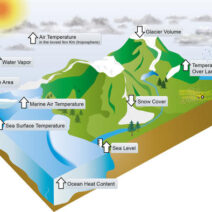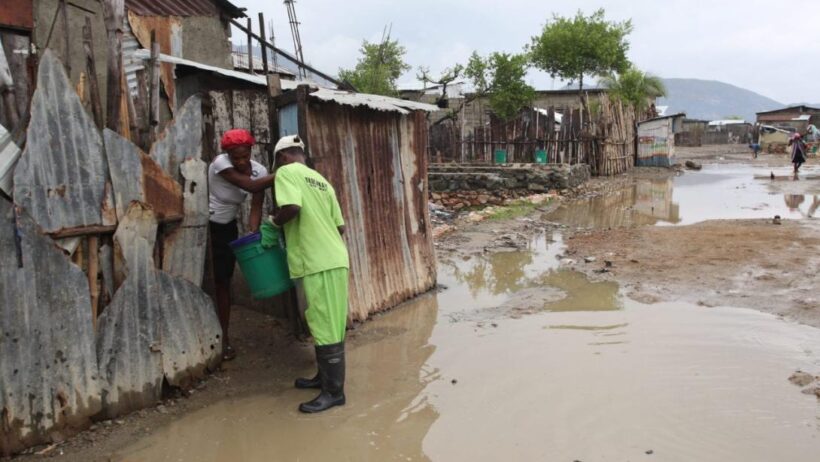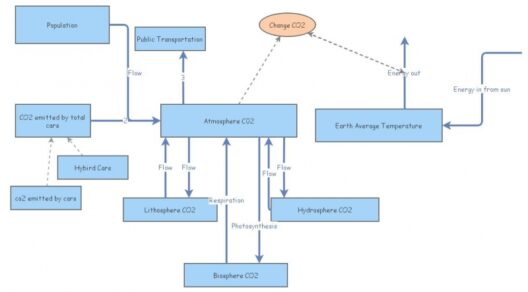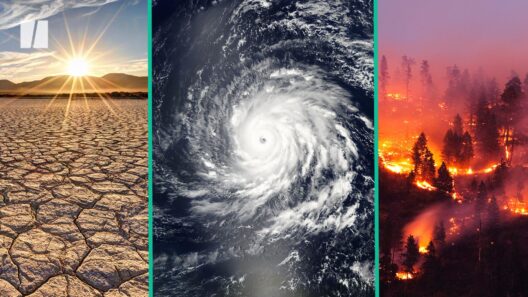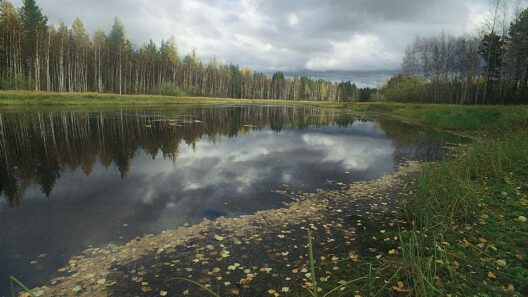Haiti is an island nation that stands resilient against a backdrop of environmental challenges, rooted primarily in its tropical climate. This Caribbean country experiences a weather system characterized by warm temperatures and distinct wet and dry seasons. Understanding Haiti’s climate is not merely an academic pursuit; it is a crucial lens through which we can view the multifaceted nature of climate change and vulnerability of communities.
To comprehend Haiti’s climate, one must first examine its geographical position. Situated between the Caribbean Sea and the Atlantic Ocean, Haiti is prone to maritime influences. The temperature generally hovers between 75°F and 85°F (24°C to 29°C) throughout the year, making it a veritable oasis for diverse flora and fauna. However, beneath this inviting veneer lies a complex interplay of weather patterns that can shift dramatically, posing significant risks to its populace.
The tropical weather in Haiti is characterized by two primary seasons: the dry season, which usually spans from November to April, and the wet season, stretching from May to October. The dry season brings relative calmness, providing a respite from heavy rains that can often lead to flooding and landslides. Conversely, the wet season is marked by a surge in precipitation, sometimes resulting in catastrophic deluges. It is during this time that Haiti becomes increasingly vulnerable to natural disasters, exacerbated by deforestation and poor land management practices.
As the nation braces itself each year for the summer months, the menace of hurricanes looms ominously. The Atlantic hurricane season runs from June 1 to November 30, placing Haiti in the crosshairs of potentially devastating storms. The island has a troubled history with hurricanes, having endured numerous violent tempests that have wreaked havoc on infrastructure, agriculture, and human life. The catastrophic impact of Hurricane Matthew in 2016 is a poignant reminder of the fragility of the Haitian landscape. This was not merely a meteorological event; it was a humanitarian crisis, exposing the vulnerabilities of a nation that often grapples with the dual burden of poverty and environmental degradation.
Hurricanes are characterized by their intense winds, torrential rainfall, and storm surges. When these ferocious events strike Haiti, they not only destroy homes and infrastructure but also contribute to long-term economic disruption. The risk is magnified due to Haiti’s high population density, particularly in urban areas such as Port-au-Prince. As floodwaters envelop neighborhoods, the fragility of housing structures becomes glaringly apparent. Many dwellings are constructed with inadequate materials, rendering them susceptible to even moderate winds.
Equally alarming is the phenomenon of climate change, which threatens to amplify the already daunting hurricane risks. As global temperatures rise, sea levels are projected to increase, resulting in more frequent and severe storms. Models predict that the Caribbean will experience a rise in hurricane intensity by the end of the century, which could result in catastrophic consequences for Haiti. This impending reality begs the question: how can the nation adapt to an ever-evolving climate?
To pivot toward resilience, robust adaptation strategies are essential. Investment in infrastructure is a keystone of risk mitigation. Reinforcing existing buildings to withstand hurricane-force winds, as well as improving local drainage systems to manage excessive rainfall, are strategies that can save lives and property. Furthermore, reforestation initiatives can play a vital role in stabilizing the landscape and reducing the risk of mudslides, while also supporting biodiversity.
Education and community-based assessments are equally crucial in cultivating a culture of resilience. Local communities must be equipped with knowledge about climate risks and effective response strategies. By incorporating indigenous knowledge alongside scientific data, Haiti can develop a more nuanced understanding of its unique environmental challenges.
Moreover, international cooperation is paramount. The Caribbean region is interconnected, and the implications of climate change transcend national borders. Collaborative efforts to share resources, technology, and information can bolster individual nations’ adaptive capacities. Hurricane preparedness cannot be siloed; it must be part of a collective regional response aimed at sustainability.
Additional focus should be on economic diversification. By reducing dependence on agriculture vulnerable to climatic fluctuations, Haiti could foster economic stability. Promoting sectors such as ecotourism, renewable energy, and sustainable agriculture will not only create jobs but will also fortify the economy against ecological crises.
In conclusion, Haiti’s tropical climate is a double-edged sword. While it offers abundant natural beauty, it also subjects the nation to severe weather events and hurricanes that can have devastating consequences. Understanding this climatic reality is essential to recognize the urgency of climate action. To navigate the perils of an inhospitable environment, Haiti must embrace resilience through strategic planning, community education, and international collaboration. In an age where climate change is more than a distant threat, it is imperative that solutions are not just envisioned but vigorously pursued. As we contemplate the future of this nation, let curiosity fuel our quest for knowledge and action, unveiling not only the challenges but also the latent opportunities for transformation.

